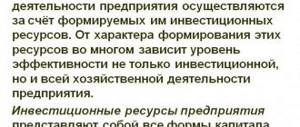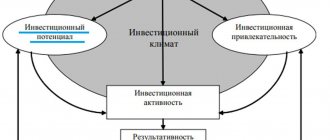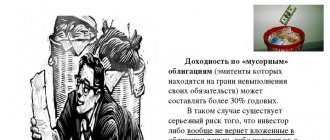Rosatom explained that the proposal to expand the nuclear power plant in the east of the Czech Republic implied the involvement of hundreds of Czech and European companies in the project. Then contracts worth billions of euros would be signed.
“The exclusion of Rosatom from the tender for the expansion of the Dukovany NPP in the Czech Republic is a non-market, politically biased decision that does not contribute to the development of mutually beneficial cooperation in the nuclear industry between our countries. <…> Thus, by excluding Rosatom from the tender, the Czech authorities are primarily excluding their national industry,” the state corporation said in a statement.
The company expressed regret over the decision of the Czechs, since the Russian and Czech nuclear industrial complexes had serious prospects not only in the Czech Republic itself, but also within the framework of joint work in third countries.
“As a world leader in the construction of modern and safe nuclear power plants, Rosatom operates in more than 50 countries around the world, we fulfill all our contractual obligations to partners, including Czech companies, and act on the basis of market principles and transparent competition. We are confident that relations in the field of nuclear energy should be outside of politics,” Rosatom explained.
Evolution of the concept of capital
Note 1
The concept of “capital” is one of the most complex and most controversial in economic sciences.
Scientific knowledge of capital cannot be separated from the historical evolution of society. With the development of history, the idea of capital as a fundamental economic category also changed.
The first milestone can be considered mercantilism. Mercantilists considered money represented by precious metals to be the source of wealth, and foreign trade to be the source of their growth. Money capital played the role of a meter assessing new, added value. In addition, capital was assigned a more significant role, which it did not fully cope with: not just assess new, added value, but also create it.
The next step was taken by the physiocrats, who considered wealth not money, but “the products of the earth.” According to them, wealth is created only in agriculture, and not in industry or trade.
Representatives of the classical school of political economy (XVIII-XIX centuries) (D. Ricardo, A. Smith) considered capital as “materialized wealth previously produced by man.”
Karl Marx, when considering the material structure of capital, noted that it is made up of raw materials, tools of labor, material products, means of subsistence, a certain amount of goods, and exchange values. Also, capital in Marxist teaching is interpreted as the ratio of materialized labor to living labor, as accumulated labor.
Maternal capital
The form of state support for families with children is maternity capital. Financial assistance has been provided since 2007 and is issued to families where a second and any subsequent child is born or adopted. The certificate is issued to one of the family members; funds can be received and used only by bank transfer. You can manage money only when the child reaches 3 years of age. However, if funds are needed to adapt and treat a child with special needs, as well as to pay off a mortgage or purchase a home, then the application can be submitted from the moment of birth.
The amount of the certificate is indexed in accordance with macroeconomic processes in the Russian Federation for 2015-2016. monetary security was established in the amount of 453,026 rubles.
Capital is
Capital is a set of financial, material and intellectual benefits that can be used to create additional benefits. Examples of such goods are things, money, financial instruments, copyright and everything that can be used to create goods.
If we talk about material benefits, this could be an increase in the value of things (for example, antiques or works of art), the use of technology to create goods, etc. If we consider various securities (finance), then their additional benefits are the increase in the value of securities or the interest received from their ownership. If we consider intellectual goods, then this is, for example, copyright, which can generate income from the use of relevant goods, technologies and other things.
It is worth knowing that as such there is no single definition of the term capital. Depending on the approaches, individual components may be included or excluded from it. Also, the interpretation itself and the main meaning may differ.
For example, in Marx’s interpretation, if a certain object is not used in economic activity, then it does not belong to capital. Let's say if you bought a sewing machine and threw it on the mezzanine, then it is not capital. But the same machine is capital in the classical theory of economics.
However, the term is often understood to mean the definition given above.
Reasons for exclusion from the tender
Rosatom was excluded from the tender after the Czech Republic blamed the Russians for explosions in the local village of Vrbetice. They happened almost seven years ago. The accusations led to a diplomatic crisis and the virtual end of relations between the countries.
There are several versions of why the Czech Republic decided to blame Russia right now. One of them concerns specifically the tender in which Rosatom took part. Allegedly, foreign competitors tried to get rid of the corporation as a participant in the tender for the construction of a new nuclear power plant unit in the Czech Republic. Political scientist Gevorg Mirzayan told 360 about this.
“Rosatom took part there. Considering the competitive abilities, I could completely bypass American and French companies,” the interlocutor explained.
He added that Rosatom did not lose the tender, it was simply not allowed. All this shows that it was at least a question of not entirely fair competition.
Capital - what is it from an economic point of view?
Encyclopedia Britannica states that funds that contribute to the provision of services or the production of goods are considered capital. These include equipment, monetary assets, land and labor. Based on this model of economic relations, K. Marx wrote the book “Capital”. The translator (Talmudist) has created so much fog that when studying these works, students by the 6th year completely lose touch with the real economy.
Let's look at the definition using an example:
I have a woodworking machine. A neighbor asked to cut logs on it. From the moment he turned on the mechanism, it became a tool of production for which I was paid. The machine turned into capital.
If I worked on it, then according to K. Marx it would not be capital. When there is no mercenary, there is no economic relationship. This is such a difference of opinion. The same is true with the land. If I process it myself, it is not considered profit. He hired workers and sold the harvest - he became a capitalist.
Liquidity ratio
Net working capital is used as such an indicator within the organization. Such indicators are needed to determine the degree of solvency of the organization (meaning short-term debts). Their essence boils down to the fact that the amount of the company's working capital is compared with its ability to pay short-term debt.
Obviously, if there is an increase in equity capital, then this can be defined as a positive fact, since this leads to an increase in the liquidity of the organization and its solvency. Demonstration of such dynamics is very important in the process of company development, since these indicators have a positive effect on the level of loyalty of lenders towards the enterprise, which is considered as a potential borrower.
Types of capital in economics
This classification is not used in accounting. These definitions appear only in economics and are included in the general concept of “capital”:
- Cash - takes into account the funds used to purchase instruments of production that generate profit. In the same category are savings that are on deposit in the bank, i.e. they generate income.
- Production – includes production facilities: equipment, premises, transport, raw materials, stocks of finished goods. Funds spent on the acquisition of production capital and depreciation are included in the cost of the manufactured product.
- Financial – provision of funds by banks. They do not have to be spent on purchasing production capacity. These are loans, investments in production expansion or available funds. In turn, if this is a loan, it can be used as circulating capital. Accordingly, the bank will receive its share of the profit, which imposes obligations on the borrower. Investment projects can make the owner of the funds a co-owner of the company, who claims a share of the profits, but also bears the risks of the organization.
Net Cash Flow
Net cash flow (in English “Net Cash Flow”, NCF) is defined as the sum of positive and negative transactions.
The net cash flow formula is formed from three components:
NCF = CFO + CFF + CFI
Where:
- CFO - operating activities (Cash Flow from operating activities, CFO or Operating Cash Flow, OCF). Profit from the main activities of the company. This already includes depreciation, accounts receivable and credit, and other liabilities and assets.
- CFI - investment activities (Cash Flows from investing activities, CFI). Investments in modernization and business expansion.
- CFF - financial activities (Cash Flows from financing activities, CFF). Payments of dividends, loan payments, share repurchases, and other financial transactions.
Modern concept of capital
The problem of defining the concept of “capital” has not been solved even today; a generally accepted opinion has not been formed in modern economic science. Let's consider several options.
Definition 1
Capital is the totality of monetary, tangible and intangible assets of an economic entity, which are mobilized from various sources and participate in operational investment processes in order to generate income and/or maximize the market value of the enterprise's assets.
Definition 2
Capital is a part of financial resources, money in circulation, generating income from this turnover. The circulation of money is carried out by investing it in business objects, lending it out, renting it out. With this interpretation, the company's capital is a combination of long-term sources of financing. Long-term sources of financing the company's activities can be divided into equity and debt capital.
So, in general, the following approaches to determining capital can be distinguished:
- The economic approach considers capital as a set of resources that are a universal source of income for an organization. It is largely theoretical in nature and difficult to implement in practice;
- the accounting approach defines capital as the share of the organization’s owners in total financial resources, and it is calculated as the result of the third section of the balance sheet “Capital and Reserves”;
- The financial approach considers capital as the totality of all financial resources invested in the assets of the organization. In this case, it is measured as the total liability or total asset of the balance sheet.
Net working capital
Initially, working capital should be understood as those elements of resources that are used for a relatively short time, while their cost is part of the costs necessary to produce a new product.
Working capital can also be described as the value expression of those items of labor that are necessary for the production process, and only once. It is important to understand that their cost is transferred to the cost of the goods produced.
Funds used in circulation can be divided into two key types: cash and inventory. These groups include the following resources:
- costs in the process of work in progress;
- materials, fuel, raw materials, energy, spare parts, semi-finished products;
- expenses related to future periods;
- finished goods and products;
- short-term financial investments;
- accounts receivable, the terms of which do not exceed 1 year;
- VAT on purchased assets;
- other current assets.
If we consider net working capital in the context of the above concepts, it is worth noting that it can be defined as the difference between current liabilities (accounts payable) and assets (current assets). Using this indicator, you can identify the degree to which current assets are covered by long-term sources of funds.
You can also use another characteristic of net current assets: this is capital, characterizing that part of the resources in circulation, for the formation of which long-term borrowed and equity capital was used.
Authorized capital
Various participants in economic activities may also have capital - a statutory background. The totality of the shares of all the founders of the enterprise is the authorized capital of the organization. Depending on the form of the company's legal unit, the fund may consist of different shares:
- A fund allocated by a state or regional authority.
- Share price.
- Contributions of participants.
- Share contributions.
During the formation process, additional or reserve capital can be created and function. However, the amount of the authorized capital remains the same. It can be changed only after a meeting of the board of founders, as well as with the entry of data into the authorized capital.
Circulation of capital
If we consider capital in the context of the economy, it is constantly moving and transforming. It happens approximately as follows.
D0 – T0 – PR – T1 – D1…
D0 is money for which a certain product is purchased (the same equipment or raw materials). For example, if you are growing vegetables, then you purchase fertilizers and grains. These are T0 products. Then production happens. For example, you saturate the earth with minerals, sow grains, water them, and the like, right down to harvesting vegetables. This is a form of PR (production).
As a result, you create product T1 (or provide some service). Then for it you receive the amount D1 (from clients). In other words, there is a circulation of capital. At first it was presented in monetary form, then in commodity form, then in production form, then again in commodity form, and then again became monetary (but in a different amount).
It is important to note that D1 > D0 (usually D1 includes D0 + PR + profit). Otherwise, what is the point of creating a product for sale if this will lead to a decrease in money (less money, less product, even less money, even less product... no opportunity to create a product).
How to increase your own working capital
This is one of the most pressing issues for a company that intends to experience constant growth. To achieve such a goal, you must initially build a system for the efficient use of available resources. This implies the correct calculation of the period of stay of net capital in the production sphere of the enterprise and in the circulation (sphere of circulation), as well as the economical use of such items of labor as materials, raw materials, etc.
It is important to understand the fact that the amount required to generate funds will be lower if the time spent by capital of this type in the production process is reduced.
This means that if the turnover of these funds accelerates, the company will reach a high level of liquidity much faster. This fact will help attract more investment. To achieve the above-mentioned acceleration, it is necessary to develop and implement measures that can significantly reduce the time during which net working capital is in transit (delivery), in production inventories, the production process itself and in warehouses where finished goods are stored. If this goal is achieved, the products will be able to be sold in large volumes, which will reduce the amount of expenses required to generate own funds.
Profit
Profit is calculated as the difference between income (revenue from the sale of goods and services) and the costs of production or acquisition and sale of these goods and services.
There are different views on the economic nature of profit.
- Opportunistic theories: as a result of some external reasons, market conditions change (for example, there was an increase in demand for a product due to a random mention by famous people), which leads to a change in revenue. But costs have remained unchanged, and there is no reason to pay more income to the owners of factors of production than before. The part of income not distributed among the owners of production factors is the profit or loss of the company.
- Monopoly: a company makes a profit as a result of disruption of competitive equilibrium due to dominance in the market with elements of price dictate up to a complete monopoly.
- Capital: Economists in the 18th and 19th centuries considered profit the surplus received by the capitalist after reimbursement of expenses as the third component of gross income, along with wages and rent. “Profit on capital” by A. Smith (1723-1790), N. W. Senior (1790-1864) and J. S. Mill (1806-1873) was divided into interest on invested capital - the “reward for abstinence” of the entrepreneur from spending own capital for current consumption; and for business income - fees for managing the enterprise and bearing certain business risks.
- Surplus Value: Karl Marx showed in Capital (1867) that the basis of profit is surplus value. There is no deception or coercion involved[12]. Profit is generated due to the fact that the specific product “Labor” is capable of creating new value, the size of which exceeds the real value of the labor itself. Part of the surplus value is transformed into the form of “costs”—loan interest, rent, taxes, salary bonuses.
- Payment for entrepreneur's services: J.-B. Say (1767-1832) and a number of other economists reduced profit to the payment to the capitalist for managing the enterprise, which was not fundamentally different from the wages of workers.
- Innovation: profit is the result of innovation; it is the income of a special factor of production - entrepreneurship.
- Risk: profit as compensation to the entrepreneur for bearing the “burden of risk” for the success or failure of his business.
What is free cash flow (FCF) in simple words
Free cash flow (from the English “Free Cash Flow”, FCF) is the money that remains with the company after all operating expenses (Capex), taxes, investments and other expenses. Often abbreviated as “FCF” or “SDP”.
A positive Free Cash Flow is an indicator of the effectiveness of company management and business performance as a whole. If this money is withdrawn from the company, it will not affect its current activities in any way. Most often, this money is considered to pay dividends to shareholders, but in fact it can be used for other important business tasks.
What free cash flow can be spent on:
- Dividend payment;
- Buyback (repurchase of shares from the stock exchange);
- Amortization;
- Investments in assets (securities, shares, bonds);
- Saving money for the future;
However, on the other hand, negative cash flow does not mean that the business is operating ineffectively. It is possible that all profits are reinvested back into production and business expansion. This can go on for more than one year.
An example of such situations are the largest retailers Magnit and Lenta. At the same time, their stock price has grown rapidly during this time.
Note Free Cash Flow is not standardized accounting.
- Cash flow - what is it;
Change in capital
The process of activity of any enterprise may be accompanied by a change in capital. This may be influenced by various factors, but the algorithm of action is the same - a report in Form No. 3 on the changes that have occurred is submitted to the tax authorities. The report must contain information about the previous three years of activity of the enterprise. Individual entrepreneurs, small businesses and non-profit organizations do not need to submit a report. The report is divided into three parts:
- Movement.
- Adjustment.
- Net assets.
The need to use net working capital
In addition to defining this type of resource, it makes sense to understand the reasons for its relevance for the enterprise. Calculating this type of capital is important because it is this category of assets that helps maintain the financial stability of the company. This can be explained by the fact that an organization that does not have sufficient resources to meet short-term obligations is unable to meet such obligations. And if the level of its own working capital exceeds the required minimum, then the company will be able to create certain reserves to expand its activities.
But at the same time, it is worth considering the following fact: if the level of working capital significantly exceeds the optimal needs of the organization, it makes sense to talk about the irrational distribution of the company’s resources. For this reason, this amount of net working capital should be constantly analyzed. This is a kind of control by the management of the enterprise regarding the relevance of the drawn up strategy for using the company’s own funds.
Real and financial capital
Another classification divides capital into real and financial. The difference lies in the way in which the value (income) from such capital itself increases. Income from the use of real capital is usually associated with making a profit - from the production of goods or services, or receiving remuneration for a product of intellectual property. That is, we invest money or other forms of capital investment in the creation of production, from the activities of which we receive profit. Thus, the initial investment increases and creates new capital. This effect in economics is usually called the multiplier effect.
Financial capital is not associated with the real production of goods and services. The use of financial capital and its self-expansion is associated with servicing the economic cycle (turnover). Income generated during the use of financial capital is usually presented in the form of payments on shares, interest on bonds, bank deposits, income of financial intermediaries, etc. For example, an entrepreneur receives a loan to expand production. As a result, income from the available funds is received not only by the entrepreneur himself (due to the functioning of real capital), but also by the bank (by receiving interest on the loan). Thus, initial credit resources bring additional income - this gives rise to an effect called the banking multiplier.
By the way, to assess the effectiveness of a project, the net present value (NPV) indicator is used. This indicator helps to compare projects with each other or evaluate their effectiveness in general.
Types of capital
Capital can be classified on various grounds:
- According to the company's ownership, capital is divided into:
- own (investment – provided by the owners,
accumulated - created in the process of functioning of the organization),
- borrowed (long-term and short-term).
- The investment object is divided into fixed and working capital. Fixed capital includes fixed assets and intangible assets, various long-term investments. Working capital participates in the circulation;
- Depending on the form in which capital is found in the circulation process, it can be:
- monetary,
commodity,
- productive.
- According to the purposes of use, capital can be divided into:
- loan,
speculative,
- productive.
Two types of free cash flow
FCF is divided into types:
- FCFF;
- FCFE;
Let's tell you what's special about each one.
4.1. Free Cash Flow to Firm
Free Cash Flow to Firm (FCFF) is your total cash flow after expenses, taxes, but before interest and total debt payments.
Is the general cash flow available to both the owners and external creditors of the company.
FCFF Formula:
FCFF = [Net Cash Flow] – [Capital Expenditures]
FCFF may be negative.
Notes
- ↑ According to the British economist W. Jevons, the word capital comes from the same Latin root as the English word cattle. Jevons explains this commonality by the fact that in ancient times the role of money was played by cattle, the unit of measurement of which was the “head” (Latin caput) (see Jevons, p. 16).
- ↑ These views of K. Marx have been disputed since their publication and are currently disputed by many economists. For the first time, consistent criticism of Marx was given by the Austrian economic school, presented, for example, in the works of O. Böhm-Bawerk: Eugen Böhm-Bawerk “Towards the Completion of the Marxist System.” Chelyabinsk, “Socium”, 2002
Theories of capital
The theoretical characteristics of capital have a long history. Over the entire period, the term has gone from the simplest “accumulation of things and money” according to A. Smith to the fundamental works of K. Marx and I. Fischer. The first perceived the term as a social category, in his works he designated capital as the self-increasing value of various types of assets, entailing surplus value. Irwin Fisher characterized the category as a source of services that create income. Therefore, its size should be calculated as the amount of income from it. The definition given by Fischer (1867-1947) is the most common and relevant to the present day.
Capital as an economic category
In economics, capital is determined by several types. Initially there was a merchant and a usurer. The change in the type of economy led to the development of the real sector and the emergence of industrial capital. With the growing importance of monetary units, the concept of financial capital appeared. Nowadays there are three types in economics:
- physical (material);
- basic;
- negotiable;
- human.
Each category covers certain areas of economic activity. Human capital is the youngest category and includes mental and physical skills and abilities acquired through training or practice.











